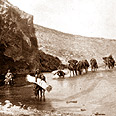
Ein Harod: Streams in the valley
Beginning over a century ago, pioneers' trip towards their dream of Israel contains tents, swamps, malaria and also happy times
Ein Harod is the name of two kibbutzim – Ein Harod Meuchad and Ein Harod Ihud – that were built this month 85 years ago, next to the Harod stream whose source is in the Jezreel Valley.
In the archives of Ein Harod Meuchad are pictures that chronicle the valley and the stream over the past century.
The following are a small sampling of those pictures, currently on display at the Beit Shturman Museum.
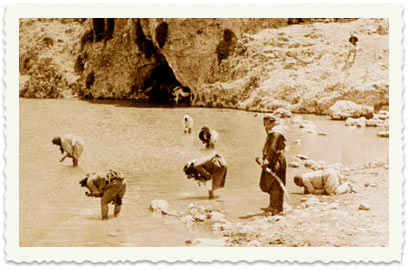
Gideon Cave (Harod stream), photographed by the Underwood brothers, 100 years ago. The brother visited Israel between 1896 and 1907, and they tried to evoke Biblical locations and stories with their pictures. They captioned their photographs with quotes from the Old Testament and used special stereoscopic glasses to take the pictures.

During WWi, German squadron 304 landed near the Merhavia cooperative. The pilots' duties included bombing and intelligence gathering. During a hot day in 1915, they bathed in Harod stream, and were photographed using the airplane cameras.
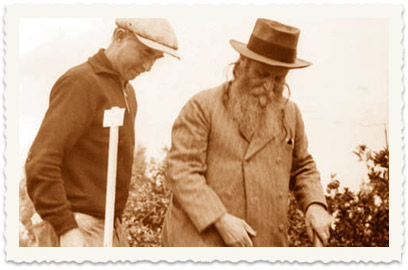
At the turn of the previous century, Yehoshua Henkin (a representative of the Jewish National Fund - JNF) began negotiations with the Lebanese effendi, Sursuk, to purchase lands in the valley.

The village of Ein Jalud (photograph: A. Suskin). Immediately after lands in the village were purchased, new settlers created a tent city. Village residents greatly admired one of them, watchman Tzvi Nisanov, and bestowed him with a castor-oil plant as a gift (right hand side of photograph)

The pioneers' tent city. The new arrivals, members of the Trumpledor Labor Brigades, experienced many difficult years in the valley. The springs in the Gilboa and along the Harod stream gushed erratically, creating swamps, which were inhabited by malaria-carrying mosquitoes.
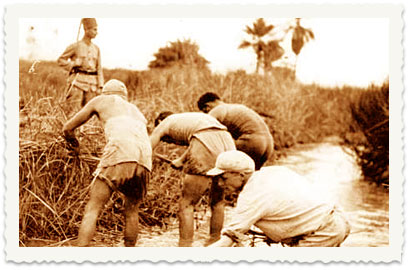
Drying out the swamps. Engineers from the JNF came up with a way to drain the springs, carried out by members of the Ein Harod community.

There was no road to the Jezreel valley, only dirt paths – completely unpassable in the winter – and train tracks. Settlers paved a road, by hand, with quarried stones, from the Ein Harod camp to the train station.

One of the tributaries of the Harod stream served as a bathing facility for the men.
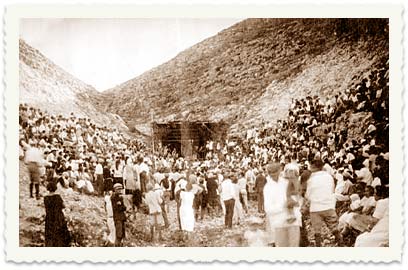
On April 17, 1926, members of the labor brigades gathered at the quarry near Ein Harod to hear a concert by Jewish violinist Jascha Heifetz.

Holiday visits in Ein Harod
To view last week's trip to the past click here










